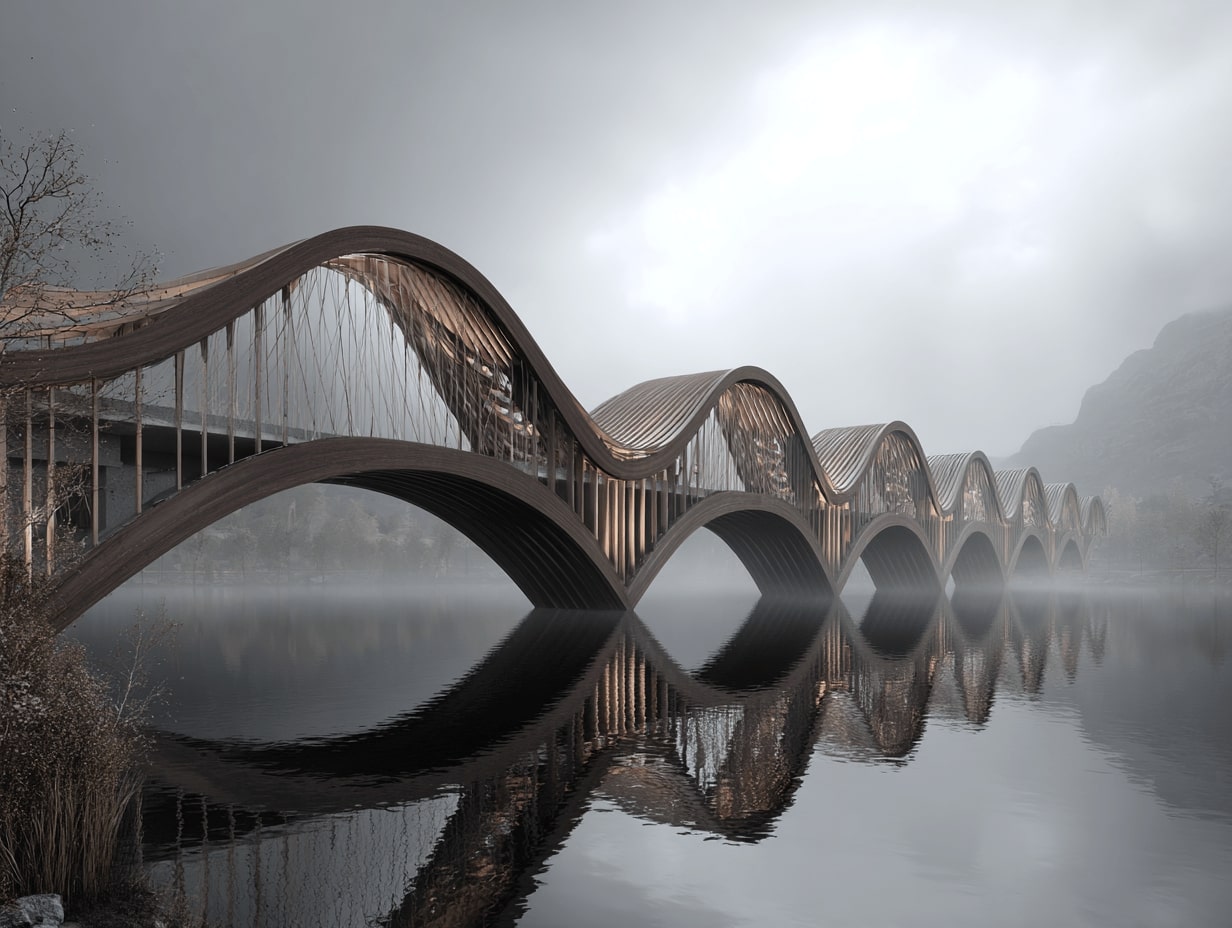- Home
- Articles
- Architectural Portfolio
- Architectral Presentation
- Inspirational Stories
- Architecture News
- Visualization
- BIM Industry
- Facade Design
- Parametric Design
- Career
- Landscape Architecture
- Construction
- Artificial Intelligence
- Sketching
- Design Softwares
- Diagrams
- Writing
- Architectural Tips
- Sustainability
- Courses
- Concept
- Technology
- History & Heritage
- Future of Architecture
- Guides & How-To
- Art & Culture
- Projects
- Interior Design
- Competitions
- Jobs
- Store
- Tools
- More
- Home
- Articles
- Architectural Portfolio
- Architectral Presentation
- Inspirational Stories
- Architecture News
- Visualization
- BIM Industry
- Facade Design
- Parametric Design
- Career
- Landscape Architecture
- Construction
- Artificial Intelligence
- Sketching
- Design Softwares
- Diagrams
- Writing
- Architectural Tips
- Sustainability
- Courses
- Concept
- Technology
- History & Heritage
- Future of Architecture
- Guides & How-To
- Art & Culture
- Projects
- Interior Design
- Competitions
- Jobs
- Store
- Tools
- More
Top Benefits of Using Parametric Design Methods in Modern Architecture

Parametric design is revolutionizing the field of architecture by leveraging algorithms to generate and manipulate complex shapes and forms. Unlike traditional design methods that often focus solely on the end result, parametric design emphasizes the relationships between geometries. This shift allows us to create design iterations faster and seamlessly integrate modifications with other project files.
One of the most compelling aspects of parametric design is its ability to produce innovative and sustainable structures. By using Object Oriented Programming, we can craft intricate designs from simple shapes, loops, and repetitions. Iconic structures like the Louvre Abu Dhabi and the World Trade Center Transportation Hub exemplify how parametric design can transform basic geometries into awe-inspiring architectural marvels.

Table of Contents
ToggleOverview of Parametric Design in Architecture
Understanding the Basics
Parametric design in architecture manipulates geometric forms using algorithms. By focusing on the relationships between geometric parameters rather than static forms, we can create complex structures from simple shapes. This design method leverages Object Oriented Programming, allowing for iterative adjustments and seamless integration with other project files. Projects like the Louvre Abu Dhabi showcase the power of these principles, achieving visually striking and functionally efficient designs through iterative optimization.
Evolution and Current Trends
The evolution of parametric design has redefined architectural possibilities. Starting with basic geometric manipulations, it has now evolved into a sophisticated approach that enhances structural performance. Modern trends include using parametric software to refine building models iteratively, optimizing both aesthetic and functional aspects. Examples include iconic structures like the World Trade Center Transportation Hub and the Galaxy SOHO Mall in Beijing, which use this method to transform simple geometric bases into complex, breathtaking forms.
Key Benefits of Parametric Design
Enhanced Design Flexibility
Parametric design offers enhanced flexibility by allowing architects to manipulate complex geometric forms with ease. By using algorithms to define relationships between parameters, we can explore a wider array of design possibilities. This adaptability aids in quickly generating multiple design iterations, making it possible to refine concepts without starting from scratch. For instance, in the Louvre Abu Dhabi project, parametric tools enabled the creation of intricate geometrical patterns seamlessly integrated into the overall structure.
Improved Efficiency and Automation
Parametric design streamlines the design process by automating repetitive tasks. This efficiency reduces the time spent on manual adjustments, allowing more focus on creativity and precision. With the ability to perform rapid iterations, parametric design methods can optimize performance criteria continuously. In notable examples like the World Trade Center Transportation Hub, this automation ensured that structural, aesthetic, and functional elements met high standards with minimal manual intervention.
Streamlined Complexity Management
Managing complexity becomes more feasible through parametric design methods. This approach simplifies the generation and manipulation of intricate designs using computational tools. We can explore numerous alternatives efficiently and find the optimal solution through rapid modifications. For example, in the Galaxy SOHO Mall in Beijing, parametric design facilitated the creation of seamless flowing curves and interconnected spaces, proving highly effective for both structural integrity and visual appeal.
By integrating multiple parameters, optimizing efficiency, and managing complexity, parametric design significantly advances modern architecture, making structures more adaptable, efficient, and visually compelling.

Practical Applications in Modern Architecture
Case Studies of Iconic Projects
Parametric design methods have been pivotal in several iconic architectural projects globally. For example, the completed façade of the Dongdaemun Design Plaza (DDP) in Seoul showcases an intricate pattern of pixilation and perforation, creating dynamic visual effects influenced by lighting and seasonal changes. The façade’s adaptive nature enables it to reflect the neon lights and LED displays of the surrounding urban environment at night, demonstrating how parametric design enhances visual appeal and integration with its setting.
Another landmark, the Tokyo Skytree in Japan, standing at 634 meters and completed in 2012, uses parametric design principles to achieve its unique tapered structure. This design ensures structural stability while providing an aesthetic appeal, emphasizing the practical benefits of parametric methods in achieving complex geometric forms and performance requirements.
Both examples illustrate how parametric design can be employed to achieve sophisticated, adaptive, and visually compelling architectural solutions, underscoring the transformative power of these methods in modern architecture.
Challenges and Limitations of Parametric Design
Technical and Skill-Related Hurdles
Not all architects possess the necessary expertise to effectively use parametric design tools. A limited understanding of software like Grasshopper may lead to suboptimal aesthetic outcomes, harming the technology’s reputation. Lack of knowledge poses a barrier to adoption, even though various online tutorials and workshops make learning more accessible. Additionally, some advanced features and algorithms require extensive proficiency, which can be daunting for professionals used to traditional methods.

Balancing Creativity and Computational Design
Parametric design can seem like it diminishes an architect’s creative input by automating repetitive tasks. However, architects’ creativity is essential for guiding the design process and making critical decisions. Mishandling parametric tools can result in designs that lack aesthetic appeal, giving the impression that computational methods limit creativity. The key is in marrying computational efficiency with artistic vision, allowing architects to explore diverse and innovative design options without sacrificing their unique creative touch.
Conclusion
Parametric design seeks to improve the architecture profession by providing advanced tools that create faster and more efficient designs. This method challenges conventional thinking but offers varied alternatives to traditional design solutions. One minor change in parameters can significantly alter the design outcome due to their interconnected nature. This presents both opportunities and risks in the design process.
Learning parametric design can be challenging, especially since software is updated frequently. These updates make it difficult to consistently link the design process to the new interface. Architects must continually adapt to these changes to keep up with the latest efficient systems for creating innovative and creative spaces.
Despite the challenges, parametric design embodies the future of architecture. It harnesses computation to manipulate geometric forms and elements, enabling the creation of complex structures and architectural designs. Various iconic projects, including the Louvre Abu Dhabi and the Tokyo Skytree, exemplify the power of parametric design. These structures showcase enhanced design flexibility, efficiency, and the ability to manage complexity.
Technical hurdles remain, and the balance between creativity and computational design is crucial. While parametric design facilitates efficiency, architects’ creativity guides the design process and critical decision-making to ensure aesthetic appeal. By leveraging computational tools, architects can achieve innovative and visually captivating structures. The profession continues evolving, driven by technological advancements and the creative visions of architects who adopt parametric design methods.
Submit your architectural projects
Follow these steps for submission your project. Submission FormLatest Posts
Top 10 Examples of Parametric Architecture Around the World
Parametric architecture is reshaping global design through computational tools that generate fluid...
10 Notable Architects Who Excel in Parametric Design
Discover 10 leading architects who excel in parametric design, showcasing how computation,...
Parametric Design in Bridge Architecture: From Idea to Ribbon-Cut
Parametric design in bridge architecture: how data, rules, and optimization speed iterations,...
8 Principles of Parametric Architecture You Should Know
Parametric architecture merges computational logic with creative exploration, allowing designers to generate...












Leave a comment